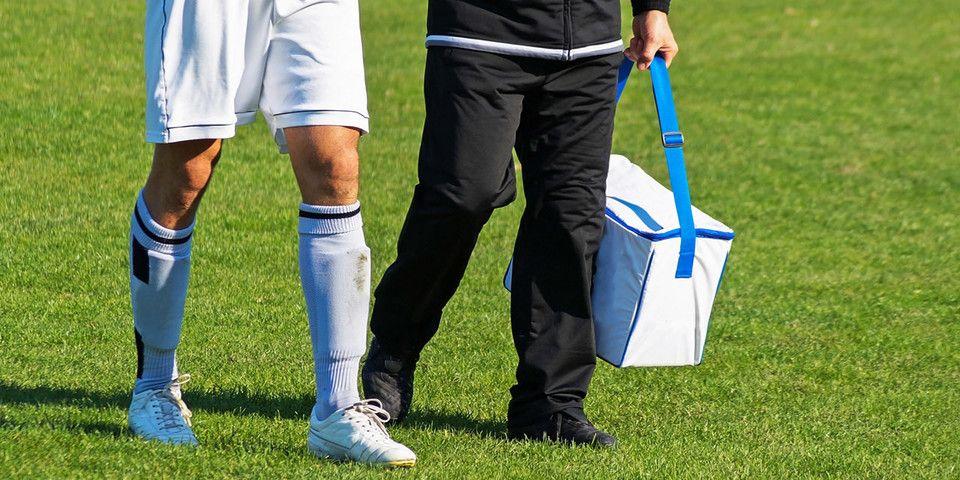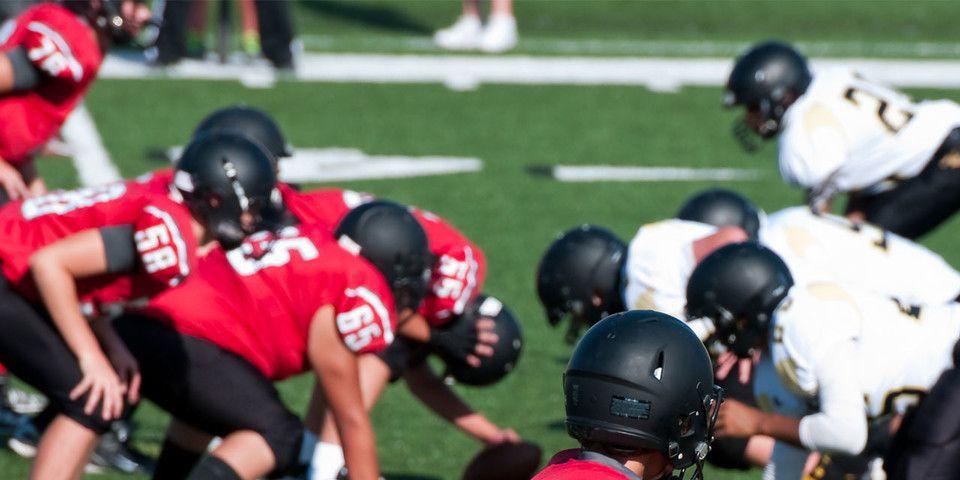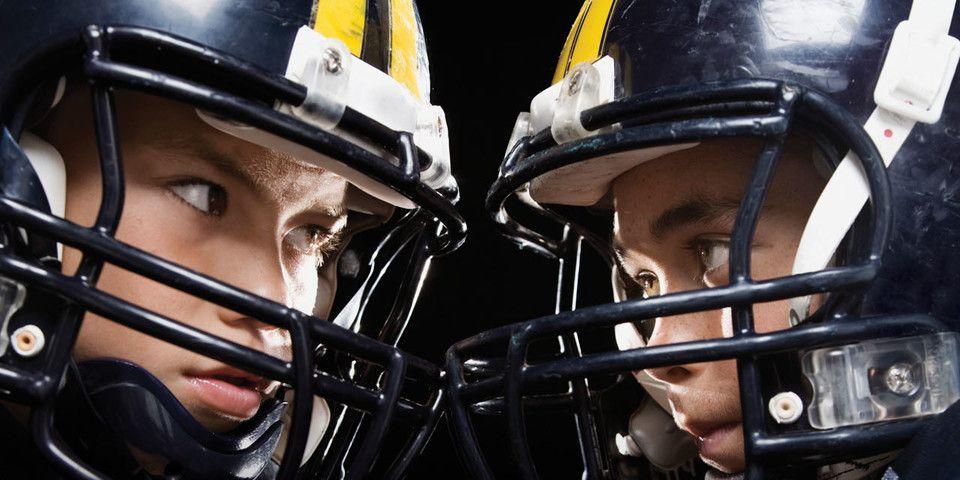Foot and Ankle Care in Football Season and Beyond
Football season is a popular time for families and friends to get outdoors and be active together, and with those benefits also comes increased risk of injury.
Feet and ankles are particularly vulnerable in this rough-and-tumble sport, but familiarity with the risks and some simple preventive measures can keep you and your loved ones safe. For anyone in your life who needs extra foot and ankle care in football, Rothman Orthopaedics provides the following guide to six common injuries.
Contusions
Contusions, also known as bruises, form when a blow (usually from tackling) ruptures blood vessels near the skin's surface, resulting in a small amount of blood leaking into the tissues beneath the skin. The trapped blood may at first appear as a black-and-blue mark, then change color as it heals. Symptoms include pain, swelling, and discoloration of the skin. These can usually be treated with elevation and/or ice.
Chronic Heel Pain
There are three common football-related culprits that can cause chronic heel pain:
-
Increased activity and time on your feet can lead to the development of plantar fasciitis. Plantar fasciitis is inflammation of the plantar fascia, a band of fibrous tissue running along the bottom of the foot from heel to front.
-
Plantar fasciitis can, in turn, generate heel spurs - sharp bony growths at the front of the heel bone. They usually begin on the front of the bone and point toward the arch of the foot, causing pain in the back of the foot (note: it is the inflamed tissue around the spur rather than the heel spur itself causing the pain).
-
Improperly fitting football cleats can also cause lasting pain in your heel and foot, so make sure you are wearing shoes that fit!
Tendonitis
Regular football players are at high risk for Achilles tendonitis. Repeated motion and stress on the Achilles tendon cause inflammation, which can then lead to the degeneration of the tendon. If left untreated, the tendon can become enlarged and hinder walking and other activities.
Sever’s Disease
Foot and ankle care in football athletes, especially younger ones, is particularly important. Youth football players up to age 14 may develop Sever’s disease, which is an inflammation of the growth plate in the heel. Frequent running or pounding on hard surfaces can cause this condition with symptoms affecting one or both feet. Kids may experience pain in the back of the heel or on the bottom of it, as well as difficulty with running or jumping. A series of x-rays may be performed to confirm the diagnosis of this condition and rule out more serious foot issues.
Sprains And Strains
Sprains and strains share similar symptoms but involve different tissues. A sprain is the overextension or tearing of ligaments (tough bands of fibrous tissue connecting two bones in the joints), while a strain is the overextension or tearing of muscle or tendons (the fibrous tissue connecting muscles to bones). Running and stopping, quick lateral movements, and hard tackles can result in foot or ankle strains or sprains. Prompt medical attention is vital for proper foot and ankle care in football-related sprains, as ignoring these injuries can lead to permanent ankle damage, which can affect your long term football career.
Fractures
Fractures, or cracks in bone structures, can be caused by any repetitive force, overuse, or direct impact and are quite common in football season. An ankle fracture in football is usually caused by the ankle rolling inward or outward, while broken toes and fractures in the top of the foot typically result from a direct blow to the area. Symptoms of fractures include swelling, bruising, pain that extends through the leg, abnormal swelling of the foot or toe, and an inability to walk or stand. An ankle fracture can easily be disregarded as a sprain, so immediate consultation with your physician is critical for proper diagnosis and treatment.
Foot And Ankle Care In Football Season And Beyond
Whether you or someone you love is a full-time football player, a weekend warrior, or a Thanksgiving Day-only participant, foot and ankle care in football season is important. The first step for anyone in need of foot and ankle care in football season should be to consult their physicians. When you need more specialized treatment, the experts at Rothman Orthopaedics can help you decide which options are right for you. Visit us here or contact us at 1-800-321-9999.
Related Specialties
Related Conditions
Related Programs
-

Athletic Training- Sport Medicine Outreach
Our Field Athletic Trainers provide direct sports medicine care to youth, high school, college and professional athletes. Rothman AT’s provide athletic training services throughout Southeastern PA to interscholastic high schools, colleges, as well as tournaments and special events.Read More -

Injury Prevention Program
The Injury Prevention Program at the Rothman Orthopaedic Institute is dedicated to the prevention of injuries from athletic participation, particularly youth sports.Read More -

Sports Concussion Program
Concussion care is a special focus of Rothman's sports medicine program. We've developed the most advanced multi-disciplinary evaluation and treatment techniques based on research done by the concussion specialists here at Rothman Orthopaedic Institute.Read More




